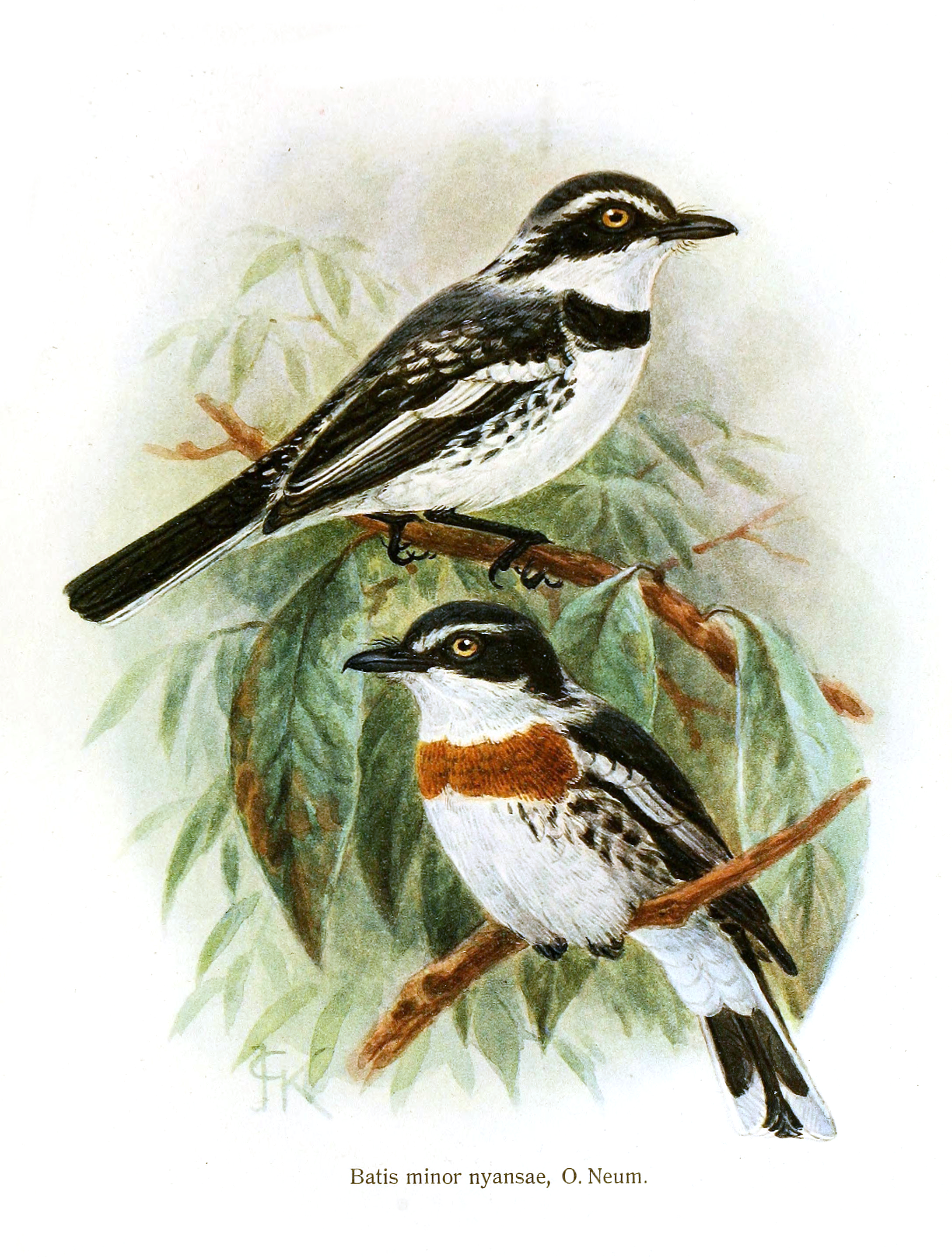Eastern Black-headed Batis on:
[Wikipedia]
[Google]
[Amazon]
 The eastern black-headed batis (''Batis minor'') is a
The eastern black-headed batis (''Batis minor'') is a
 The eastern black-headed batis (''Batis minor'') is a
The eastern black-headed batis (''Batis minor'') is a passerine
A passerine () is any bird of the order Passeriformes (; from Latin 'sparrow' and '-shaped'), which includes more than half of all bird species. Sometimes known as perching birds, passerines are distinguished from other orders of birds by t ...
bird in the family Platysteiridae
Platysteiridae is a family of small, stout passerine birds of the African tropics. The family contains the wattle-eyes, batises and shrike-flycatchers. They were previously classed as a subfamily of the Old World flycatchers, Muscicapidae. These ...
from eastern Africa. It was formerly treated as conspecific
Biological specificity is the tendency of a characteristic such as a behavior or a biochemical variation to occur in a particular species.
Biochemist Linus Pauling stated that "Biological specificity is the set of characteristics of living organ ...
with the western black-headed batis
The western black-headed batis (''Batis erlangeri'') or Von Erlanger's batis, is a species of passerine bird in the wattle-eye family Platysteiridae.Louette, M. (2019)"Western Black-headed Batis (''Batis erlangeri'')" In: del Hoyo, J., Elliott, A ...
.
Taxonomy
The eastern black-headed batis was described by the German ornithologistCarlo von Erlanger
Carlo von Erlanger (5 September 1872 – 4 September 1904) was a German ornithologist and explorer born in Ingelheim am Rhein. He was a cousin to musicologist Rodolphe d'Erlanger (1872-1932). ''(See: Erlanger family tree).''
He studied ornitholo ...
in 1901 who considered the taxon as a subspecies of the grey-headed batis (''Batis orientalis'') and introduced the trinomial name
In biology, trinomial nomenclature refers to names for taxa below the rank of species. These names have three parts. The usage is different in zoology and botany.
In zoology
In zoological nomenclature, a trinomen (), trinominal name, or ternary ...
''Batis orientalis minor''.
Two subspecies
In biological classification, subspecies is a rank below species, used for populations that live in different areas and vary in size, shape, or other physical characteristics (morphology), but that can successfully interbreed. Not all species ...
are recognised:
* ''B. m. minor'' Erlanger, 1901 – southern Somalia
* ''B. m. suahelica'' Neumann, 1907 – southeastern Kenya and eastern Tanzania
Description
The eastern black-headed batis is in length and weighs . It is a small, stocky, rather restless, flycatcher like bird with a white, black and grey plumage. The forehead, crown and nape are blackish grey with a white supercilium and loral spot, the mask is glossy bluish black and there is a white spot on the nape. The mantle and back are dark grey with a paler rump, females have a greyer mantle. The underparts are white with a glossy black breast band, which is dark reddish brown in the females. The tail is black with white outer tail feathers while the wings are mainly black with a white stripe. The bill and legs are black and the eyes are yellow. Juveniles are similar to females but browner.Distribution and habitat
The eastern black-headed batis occurs in a wide variety of habitats so long as trees are present. These vary from arid savannah woodlands through tojuniper
Junipers are coniferous trees and shrubs in the genus ''Juniperus'' () of the cypress family Cupressaceae. Depending on the taxonomy, between 50 and 67 species of junipers are widely distributed throughout the Northern Hemisphere, from the Arcti ...
on the edge of montane evergreen forest, and including parks and gardens.
Behaviour
The eastern black-headed batis' biology is little known, they are seemingly typical batises and live in pairs or small family groups. Its diet is insects which it forages for by searching foliage or flycatching.References
{{Taxonbar, from=Q1308702 Batis (bird) Birds of East Africa Birds described in 1901 Taxonomy articles created by Polbot